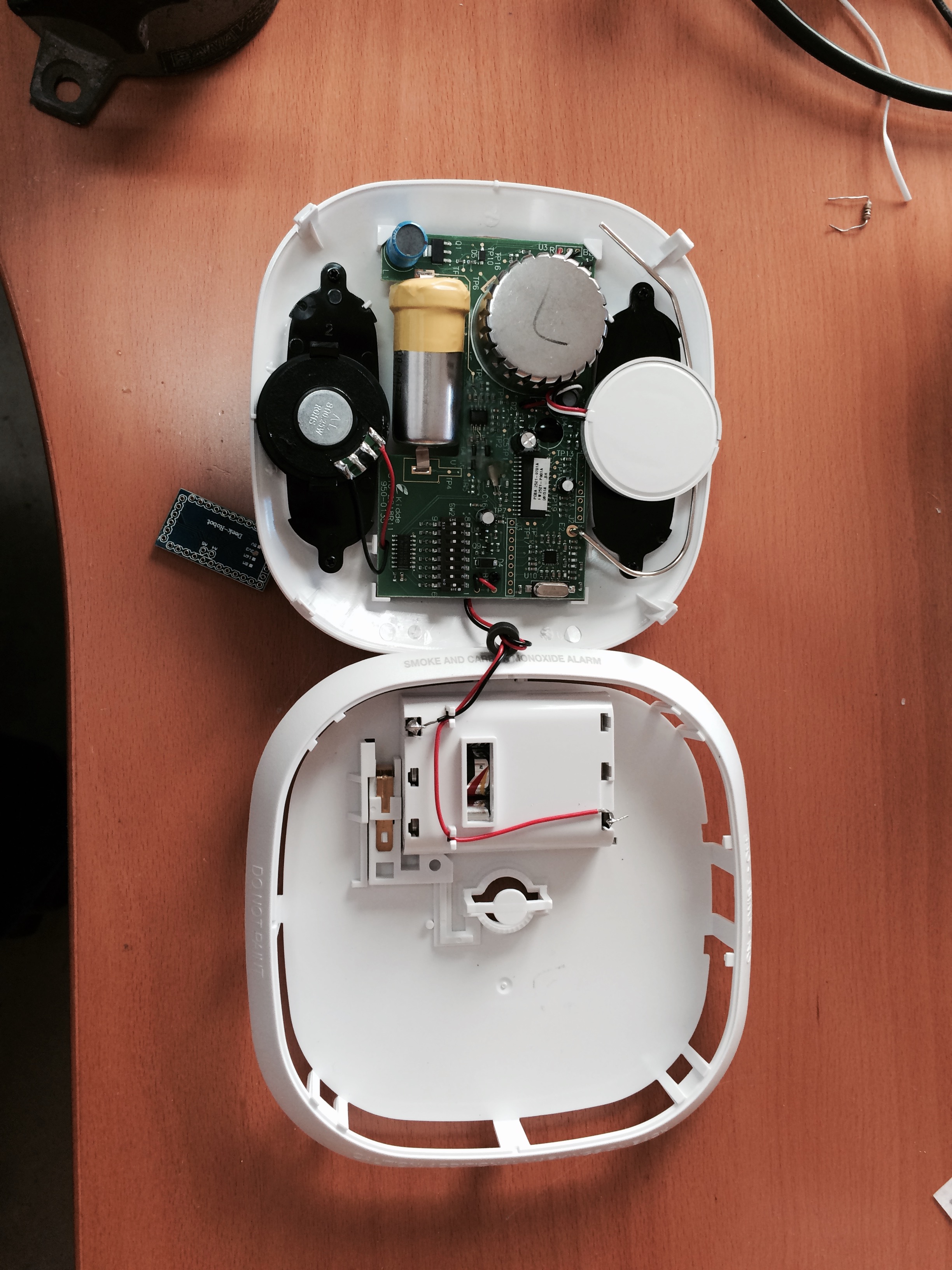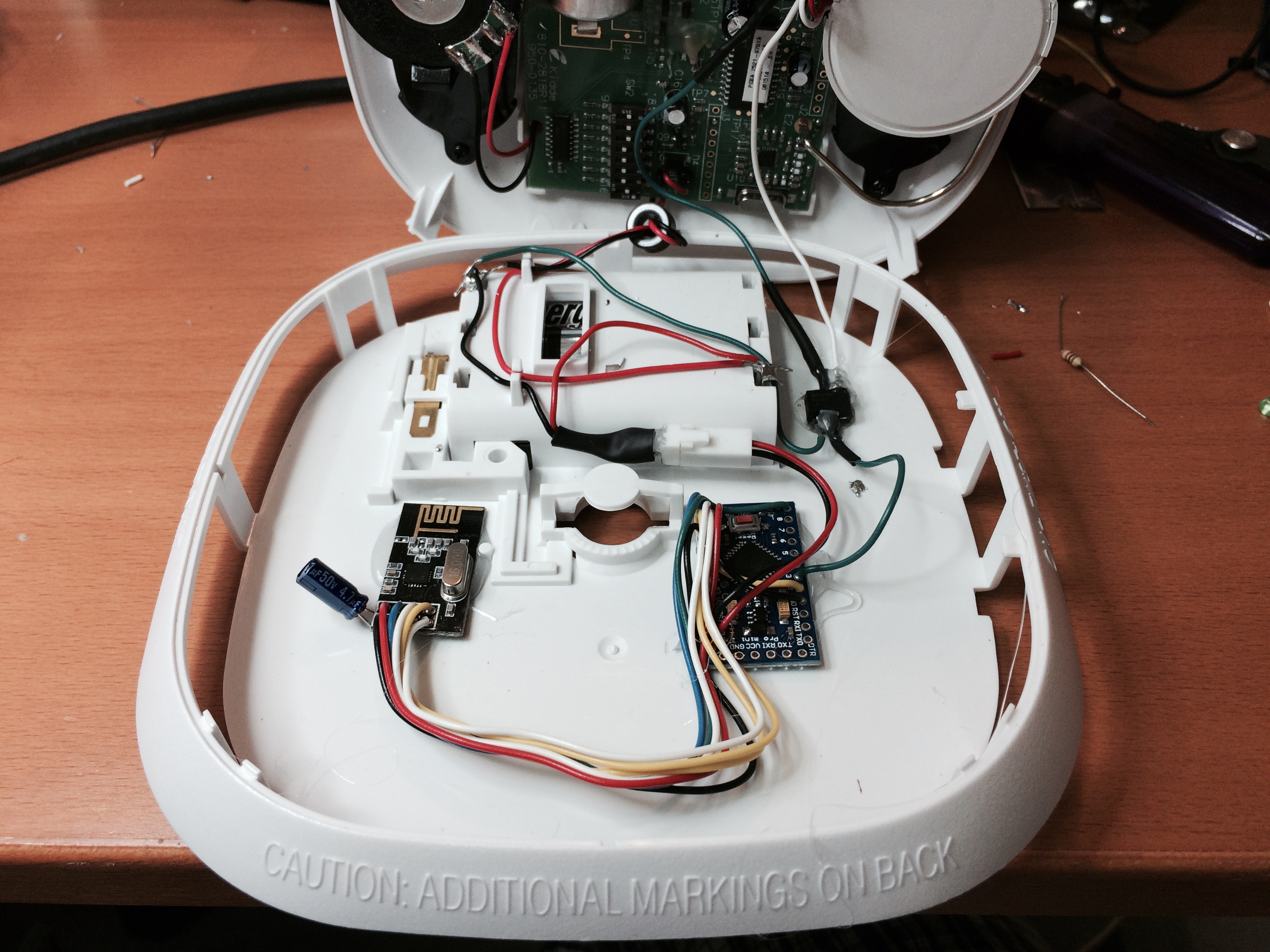'MySensoring' a Kidde Smoke Detector. (Completed)
-
@ServiceXp Cool I just tested it and was ready build my first unit. I will post after I do it tonight! Have you tried to sniff the Jumpers for signals(like the CO2 or Smoke)? You said you are using the built in battery low detection are you talking about the warning that the batteries need to be replaced locally or remote? Oh Nevermind it will alarm so you will know remote and audible siren and voice local.
The 3V3 off the board proves to be clean enough? I read somewhere that that might be a problem.
Thanks
-
@ServiceXp Cool I just tested it and was ready build my first unit. I will post after I do it tonight! Have you tried to sniff the Jumpers for signals(like the CO2 or Smoke)? You said you are using the built in battery low detection are you talking about the warning that the batteries need to be replaced locally or remote? Oh Nevermind it will alarm so you will know remote and audible siren and voice local.
The 3V3 off the board proves to be clean enough? I read somewhere that that might be a problem.
Thanks
-
Ok all is Good! I just used the octocoupler minus the perf board,also as a side note I changed the resistor you showed to a 4.7K to keep the current of the speaker from being drowned out, I also added a power header.

and here is the Modded One!

Thanks again @ServiceXp for all the hard work you did to get us this mod. Now 9 more to go! But I will wait and test this one out for a couple of months or maybe I should just build 5 more for now. Any Ideas on how to make this run on external power until power is lost?
-
Ok all is Good! I just used the octocoupler minus the perf board,also as a side note I changed the resistor you showed to a 4.7K to keep the current of the speaker from being drowned out, I also added a power header.

and here is the Modded One!

Thanks again @ServiceXp for all the hard work you did to get us this mod. Now 9 more to go! But I will wait and test this one out for a couple of months or maybe I should just build 5 more for now. Any Ideas on how to make this run on external power until power is lost?
@DrJeff Sorry about the delay.. Looks like you figured it out... :-)
You really don't need to build anymore if you are using those detectors through out the house (and they are setup interlocked), as once one goes off, they all go off and will signal to your controller that there is trouble.
-
@DrJeff Sorry about the delay.. Looks like you figured it out... :-)
You really don't need to build anymore if you are using those detectors through out the house (and they are setup interlocked), as once one goes off, they all go off and will signal to your controller that there is trouble.
-
Building regs call for mains powered smoke alarms interconnected by wireless with battery backup. Has anyone figured how to intercept the signalling between them? Their being mains powered makes them scary to experiment on.
This'll be my first mysensor project with domoticz. Hopefully not biting off more than I can chew.
-
Building regs call for mains powered smoke alarms interconnected by wireless with battery backup. Has anyone figured how to intercept the signalling between them? Their being mains powered makes them scary to experiment on.
This'll be my first mysensor project with domoticz. Hopefully not biting off more than I can chew.
@peterkins They are probably 5v inside so you just have to figure out (like ServiceXp did) where to tap in. or, if you want something completely non intrusive just use a sound detector....
